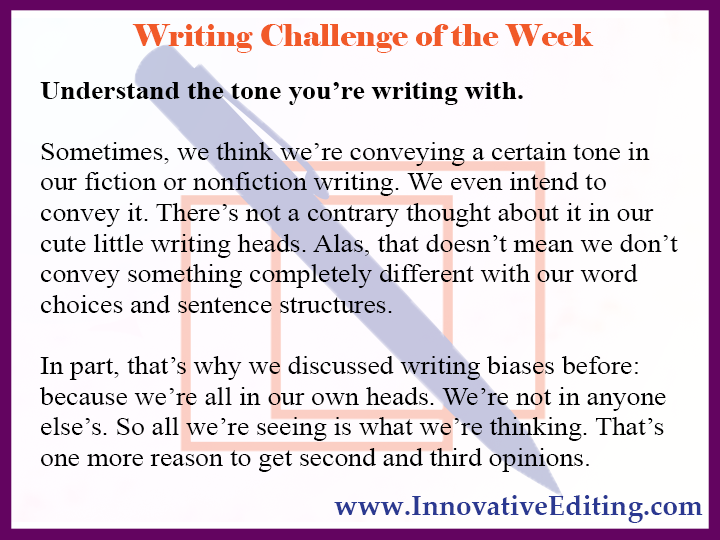8 Ways to Edit the Second Draft – or Any Draft – of Your Manuscript
- Jeannette DiLouie
- Jul 20, 2017
- 4 min read

Today’s writing-related Challenge of the Week acknowledges how very tricky self-editing can be when we’re talking about something as long as a novel manuscript.
When your word count is at 70,000 to 120,000, that’s a lot of details to keep straight, spelling and grammar errors to catch, sentence structure to smooth out and creative writing sanity to maintain.
It’s a tough job, but if you want to be published with your dignity intact, then somebody’s got to do it. And that somebody should probably be you.
If that sounds like a daunting task, here’s a piece of encouragement. Whether working on a novel or non-fiction piece, nobody’s ever died from the editing process.
They might have thrown their manuscripts out the window or sent them flying into the trash bin. Perhaps they tore out a few locks of hair or threw a few temper tantrums, vowing to never edit – or write – again.
But nobody’s ever died (at least I’m fairly sure they haven’t) during the editing process. And I’m (fairly) sure you won’t be the first either.
Now that we have that cheerful fact established, let’s talk about the best ways to edit any kind of manuscript, no matter the genre. While I do think that just reading through a first draft is perfectly sufficient, once you get to the second draft and beyond, you might want to start considering some different techniques to try out.
There’s actually a wide array of choices to go with, hence the reason why this week’s writing challenge goes like this:
Try out something from Innovative Editing’s list of editorial tactics.
When you’re working on your second draft, you might think you should just read through your story again, exactly like you read through the first draft. And that’s definitely an option. But did you know there are different ways to read through it? Ways that could enhance your editing skills and help you catch more editorial errors?
There are a whole list of methods to help you edit your story. But the following eight might be the most powerful, effective and (overall) non-painful.
This is a topic I admittedly already covered last week in two separate blog posts – here and here – since I went into a decent bit of detail about each editorial tip. But for today’s purpose, here’s the quick list:
Print it out. For whatever reason, printing out a manuscript instead of staring at it on screen can give you a whole new and powerful editorial perspective to work with.
Read it word by word instead of line by line. Admittedly, this takes a while. But when it comes to spelling and grammar mistakes, you’re not going to find a better way to clean up your copy then focusing on each word as a stand-alone entity rather than just one piece of a sentence.
Read it out loud. Like reading it word by word, this editing trick is more time-consuming. But like printing it out, it allows you to analyze your manuscript from a whole new angle – this time, an auditory one.
Walk away for a bit. Taking breaks is important, regardless of whether we’re staring at a computer screen or a piece of paper, reading word by word or line by line, or out loud or to ourselves. It’s not just a matter of taxing our eyes or voice or ears; it’s a matter of taxing our brains. So set certain stopping points for yourself along your editorial journey, where you literally get up and walk away from your manuscript for a bit to go do something else.
Take a walk. Just do it with your printed manuscript in hand. The phyiscal movement could stimulate your brain more than you'd think.
Read it backward instead of forward. Start with the last chapter and look it over from start to finish. Then move on to the second-to-last chapter, and look that over from start to finish. Then move on to the third-to-last chapter, and do the same exact thing. You might not catch more spelling and grammar mistakes this way, but you’re probably going to catch more plot, setting and character errors.
Listen to classical music while you edit. Studies show that listening to classical music can boost your brain power and creative abilities. So you might want to try it out.
Get someone else to edit it for you. In all honesty, I usually don’t recommend getting outside editorial guidance for the second draft. That’s typically what you want to look for when you’ve got a fifth or sixth draft on your hands. During the first few rounds, you still have too many story aspects to work out yourself, and you don’t want to be wasting money asking a professional editor for guidance when you’re still so far away from the set-in-stone stage.
But if you’re really feeling stuck or just completely overwhelmed, then shoot me an email at jdilouie@innovativeediting.com. I’ll be happy to help you out however I can, no matter what draft of that novel or non-fiction manuscript you’re on.




